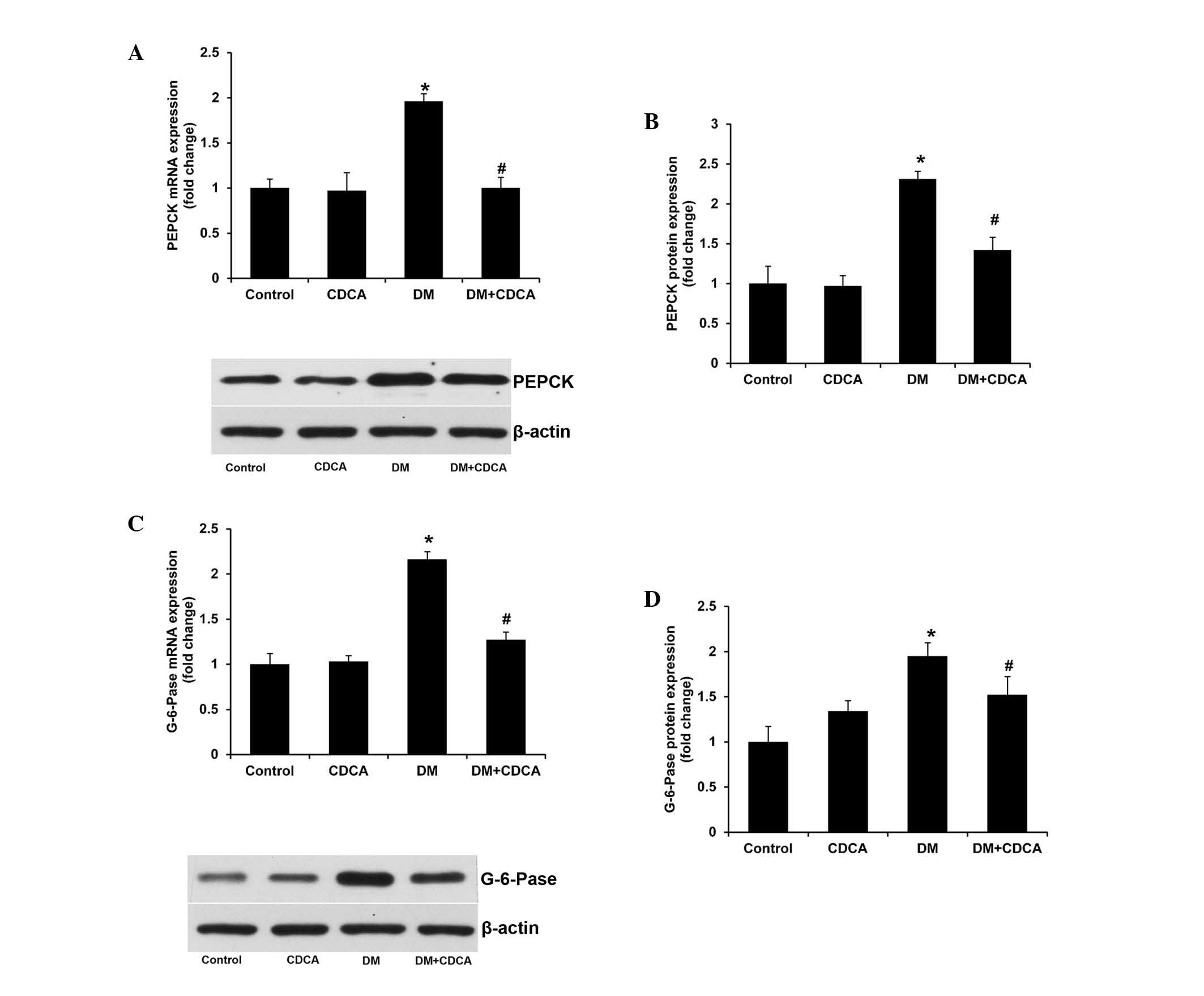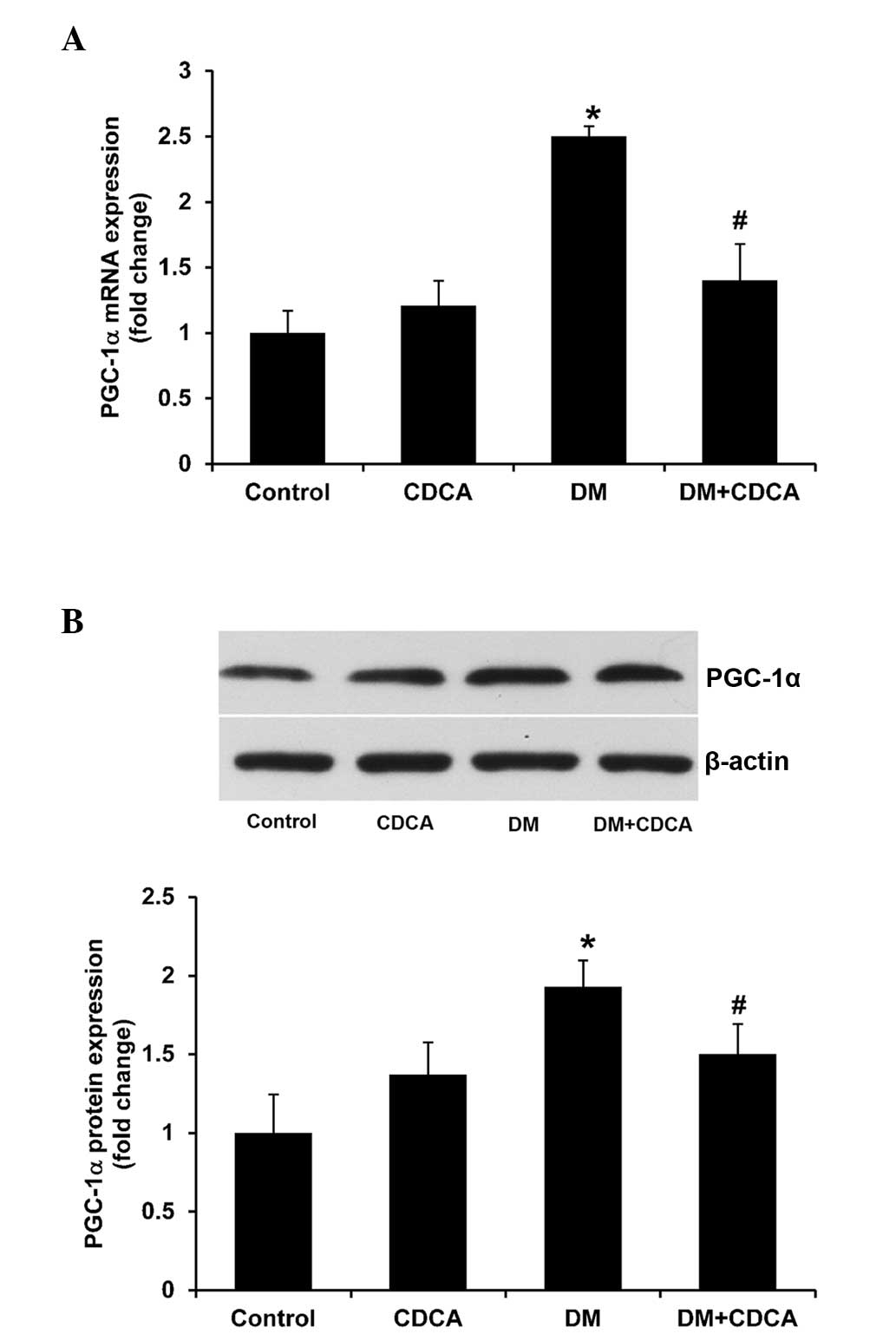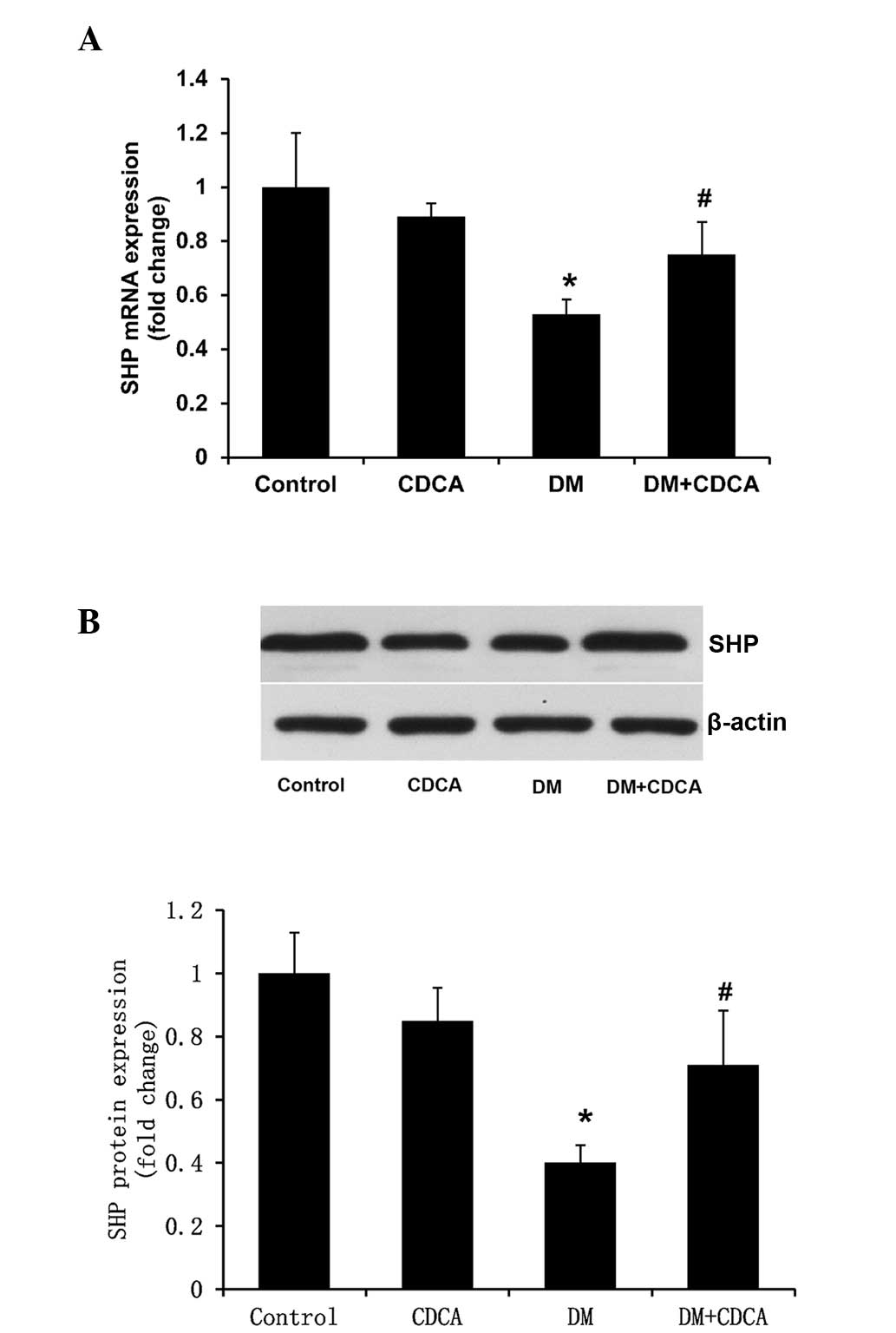|
1
|
Shaw JE, Sicree RA and Zimmet PZ: Global
estimates of the prevalence of diabetes for 2010 and 2030. Diabetes
Res Clin Pract. 87:4–14. 2010. View Article : Google Scholar
|
|
2
|
Tripathy D and Chavez AO: Defects in
insulin secretion and action in the pathogenesis of type 2 diabetes
mellitus. Curr Diab Rep. 10:184–191. 2010. View Article : Google Scholar : PubMed/NCBI
|
|
3
|
Pugliese G, Solini A, Zoppini G, Fondelli
C, Zerbini G, Vedovato M, Cavalot F, Lamacchia O, Buzzetti R,
Morano S, et al: High prevalence of advanced retinopathy in
patients with type 2 diabetes from the renal insufficiency and
cardiovascular events (RIACE) italian multicenter study. Diabetes
Res Clin Pract. 98:329–337. 2012. View Article : Google Scholar : PubMed/NCBI
|
|
4
|
Roscioni SS, de Zeeuw D, Hellemons ME,
Mischak H, Zürbig P, Bakker SJ, Gansevoort RT, Reinhard H, Persson
F, Lajer M, et al: A urinary peptide biomarker set predicts
worsening of albuminuria in type 2 diabetes mellitus. Diabetologia.
56:259–267. 2013. View Article : Google Scholar
|
|
5
|
Moosavi SM and Karimi Z: Cooperative
mechanisms involved in chronic antidiuretic response to
bendroflumethiazide in rats with lithium-induced nephrogenic
diabetes insipidus. Acta Physiol Hung. 101:88–102. 2014. View Article : Google Scholar : PubMed/NCBI
|
|
6
|
Look AHEAD Research Group; Wing RR, Bolin
P, Brancati FL, Bray GA, Clark JM, Coday M, Crow RS, Curtis JM,
Egan CM, Espeland MA, et al: Cardiovascular effects of intensive
lifestyle intervention in type 2 diabetes. N Engl J Med.
369:145–154. 2013. View Article : Google Scholar : PubMed/NCBI
|
|
7
|
Torres-Jacome J, Gallego M,
Rodriguez-Robledo JM, Sanchez-Chapula JA and Casis O: Improvement
of the metabolic status recovers cardiac potassium channel
synthesis in experimental diabetes. Acta Physiol (Oxf).
207:447–459. 2013. View Article : Google Scholar
|
|
8
|
Duckworth W, Abraira C, Moritz T, Reda D,
Emanuele N, Reaven PD, Zieve FJ, Marks J, Davis SN, Hayward R, et
al: Glucose control and vascular complications in veterans with
type 2 diabetes. N Engl J Med. 360:129–139. 2009. View Article : Google Scholar
|
|
9
|
Winzell MS and Ahren B: The high-fat
diet-fed mouse: A model for studying mechanisms and treatment of
impaired glucose tolerance and type 2 diabetes. Diabetes. 53(Suppl
3): S215–S219. 2004. View Article : Google Scholar : PubMed/NCBI
|
|
10
|
Haslam DW and James WP: Obesity. Lancet.
366:1197–1209. 2005. View Article : Google Scholar : PubMed/NCBI
|
|
11
|
Baptissart M, Vega A, Martinot E, Baron S,
Lobaccaro JM and Volle DH: Farnesoid X receptor alpha: A molecular
link between bile acids and steroid signaling? Cell Mol Life Sci.
70:4511–4526. 2013. View Article : Google Scholar : PubMed/NCBI
|
|
12
|
Lefebvre P, Cariou B, Lien F, Kuipers F
and Staels B: Role of bile acids and bile acid receptors in
metabolic regulation. Physiol Rev. 89:147–191. 2009. View Article : Google Scholar : PubMed/NCBI
|
|
13
|
Duran-Sandoval D, Mautino G, Martin G,
Percevault F, Barbier O, Fruchart JC, Kuipers F and Staels B:
Glucose regulates the expression of the farnesoid X receptor in
liver. Diabetes. 53:890–898. 2004. View Article : Google Scholar : PubMed/NCBI
|
|
14
|
Zhang Y, Lee FY, Barrera G, Lee H, Vales
C, Gonzalez FJ, Willson TM and Edwards PA: Activation of the
nuclear receptor FXR improves hyperglycemia and hyperlipidemia in
diabetic mice. Proc Natl Acad Sci USA. 103:1006–1011. 2006.
View Article : Google Scholar : PubMed/NCBI
|
|
15
|
Ma K, Saha PK, Chan L and Moore DD:
Farnesoid X receptor is essential for normal glucose homeostasis. J
Clin Invest. 116:1102–1109. 2006. View
Article : Google Scholar : PubMed/NCBI
|
|
16
|
Cariou B, van Harmelen K, Duran-Sandoval
D, van Dijk TH, Grefhorst A, Abdelkarim M, Caron S, Torpier G,
Fruchart JC, Gonzalez FJ, et al: The farnesoid X receptor modulates
adiposity and peripheral insulin sensitivity in mice. J Biol Chem.
281:11039–11049. 2006. View Article : Google Scholar : PubMed/NCBI
|
|
17
|
Prawitt J, Abdelkarim M, Stroeve JH,
Popescu I, Duez H, Velagapudi VR, Dumont J, Bouchaert E, van Dijk
TH, Lucas A, et al: Farnesoid X receptor deficiency improves
glucose homeostasis in mouse models of obesity. Diabetes.
60:1861–1871. 2011. View Article : Google Scholar : PubMed/NCBI
|
|
18
|
Zhang Y, Ge X, Heemstra LA, Chen WD, Xu J,
Smith JL, Ma H, Kasim N, Edwards PA and Novak CM: Loss of FXR
protects against diet-induced obesity and accelerates liver
carcinogenesis in ob/ob mice. Mol Endocrinol. 26:272–280. 2012.
View Article : Google Scholar : PubMed/NCBI
|
|
19
|
National Research Council (US) Committee
for the Update of the Guide for the Care and Use of Laboratory
Animals: Guide for the Care and Use of Laboratory Animals. 8th.
National Academies Press; Washington, DC: 2011
|
|
20
|
Wang P, Xu TY, Guan YF, Su DF, Fan GR and
Miao CY: Perivascular adipose tissue-derived visfatin is a vascular
smooth muscle cell growth factor: Role of nicotinamide
mononucleotide. Cardiovasc Res. 81:370–380. 2009. View Article : Google Scholar
|
|
21
|
Wang P, Du H, Zhou CC, Song J, Liu X, Cao
X, Mehta JL, Shi Y, Su DF and Miao CY: Intracellular
NAMPT-NAD+-SIRT1 cascade improves post-ischaemic vascular repair by
modulating Notch signalling in endothelial progenitors. Cardiovasc
Res. 104:477–488. 2014. View Article : Google Scholar : PubMed/NCBI
|
|
22
|
Lee J, Hong SW, Park SE, Rhee EJ, Park CY,
Oh KW, Park SW and Lee WY: Exendin-4 regulates lipid metabolism and
fibroblast growth factor 21 in hepatic steatosis. Metabolism.
63:1041–1048. 2014. View Article : Google Scholar : PubMed/NCBI
|
|
23
|
Wang P, Xu TY, Guan YF, Tian WW, Viollet
B, Rui YC, Zhai QW, Su DF and Miao CY: Nicotinamide
phosphoribosyltransferase protects against ischemic stroke through
SIRT1-dependent adenosine monophosphate-activated kinase pathway.
Ann Neurol. 69:360–374. 2011. View Article : Google Scholar : PubMed/NCBI
|
|
24
|
Wang P, Xu TY, Wei K, Guan YF, Wang X, Xu
H, Su DF, Pei G and Miao CY: ARRB1/β-arrestin-1 mediates
neuroprotection through coordination of BECN1-dependent autophagy
in cerebral ischemia. Autophagy. 10:1535–1548. 2014. View Article : Google Scholar : PubMed/NCBI
|
|
25
|
Bechmann LP, Hannivoort RA, Gerken G,
Hotamisligil GS, Trauner M and Canbay A: The interaction of hepatic
lipid and glucose metabolism in liver diseases. J Hepatol.
56:952–964. 2012. View Article : Google Scholar
|
|
26
|
Kanaya E, Shiraki T and Jingami H: The
nuclear bile acid receptor FXR is activated by PGC-1alpha in a
ligand-dependent manner. Biochem J. 382:913–921. 2004. View Article : Google Scholar : PubMed/NCBI
|
|
27
|
Goodwin B, Jones SA, Price RR, Watson MA,
McKee DD, Moore LB, Galardi C, Wilson JG, Lewis MC, Roth ME, et al:
A regulatory cascade of the nuclear receptors FXR, SHP-1 and LRH-1
represses bile acid biosynthesis. Mol Cell. 6:517–526. 2000.
View Article : Google Scholar : PubMed/NCBI
|
|
28
|
Kim Y, Keogh J and Clifton P: A review of
potential metabolic etiologies of the observed association between
red meat consumption and development of type 2 diabetes mellitus.
Metabolism. 64:768–779. 2015. View Article : Google Scholar : PubMed/NCBI
|
|
29
|
Inzucchi SE, Bergenstal RM, Buse JB,
Diamant M, Ferrannini E, Nauck M, Peters AL, Tsapas A, Wender R and
Matthews DR: Management of hyperglycemia in type 2 diabetes, 2015:
A patient-centered approach: Update to a position statement of the
American diabetes association and the european association for the
study of diabetes. Diabetes Care. 38:140–149. 2015. View Article : Google Scholar
|
|
30
|
Cipriani S, Mencarelli A, Palladino G and
Fiorucci S: FXR activation reverses insulin resistance and lipid
abnormalities and protects against liver steatosis in Zucker
(fa/fa) obese rats. J Lipid Res. 51:771–784. 2010. View Article : Google Scholar :
|
|
31
|
Mencarelli A, Cipriani S, Renga B, D'Amore
C, Palladino G, Distrutti E, Baldelli F and Fiorucci S: FXR
activation improves myocardial fatty acid metabolism in a rodent
model of obesity-driven cardiotoxicity. Nutr Metab Cardiovasc Dis.
23:94–101. 2013. View Article : Google Scholar
|
|
32
|
Ryan KK, Tremaroli V, Clemmensen C,
Kovatcheva-Datchary P, Myronovych A, Karns R, Wilson-Pérez HE,
Sandoval DA, Kohli R, Bäckhed F and Seeley RJ: FXR is a molecular
target for the effects of vertical sleeve gastrectomy. Nature.
509:183–188. 2014. View Article : Google Scholar : PubMed/NCBI
|
|
33
|
Barthel A and Schmoll D: Novel concepts in
insulin regulation of hepatic gluconeogenesis. Am J Physiol
Endocrinol Metab. 285:E685–E692. 2003. View Article : Google Scholar : PubMed/NCBI
|
|
34
|
Lee J, Padhye A, Sharma A, Song G, Miao J,
Mo YY, Wang L and Kemper JK: A pathway involving farnesoid X
receptor and small heterodimer partner positively regulates hepatic
sirtuin 1 levels via microRNA-34a inhibition. J Biol Chem.
285:12604–12611. 2010. View Article : Google Scholar : PubMed/NCBI
|
|
35
|
Haase TN, Ringholm S, Leick L, Biensø RS,
Kiilerich K, Johansen S, Nielsen MM, Wojtaszewski JF, Hidalgo J,
Pedersen PA and Pilegaard H: Role of PGC-1α in exercise and
fasting-induced adaptations in mouse liver. Am J Physiol Regul
Integr Comp Physiol. 301:R1501–R1509. 2011. View Article : Google Scholar : PubMed/NCBI
|
|
36
|
Zhang LN, Zhou HY, Fu YY, Li YY, Wu F, Gu
M, Wu LY, Xia CM, Dong TC, Li JY, et al: Novel small-molecule
PGC-1α transcriptional regulator with beneficial effects on
diabetic db/db mice. Diabetes. 62:1297–1307. 2013. View Article : Google Scholar :
|
|
37
|
Perry CG: Is muscle hypertrophy following
resistance exercise regulated by truncated splice variants of
PGC-1alpha? Acta Physiol (Oxf). 212:122–124. 2014. View Article : Google Scholar
|
|
38
|
Lundberg TR, Fernandez-Gonzalo R, Norrbom
J, Fischer H, Tesch PA and Gustafsson T: Truncated splice variant
PGC-1α4 is not associated with exercise-induced human muscle
hypertrophy. Acta Physiol (Oxf). 212:142–151. 2014. View Article : Google Scholar
|
|
39
|
Wang L, Liu J, Saha P, Huang J, Chan L,
Spiegelman B and Moore DD: The orphan nuclear receptor SHP
regulates PGC-1alpha expression and energy production in brown
adipocytes. Cell Metab. 2:227–238. 2005. View Article : Google Scholar : PubMed/NCBI
|
|
40
|
Park MJ, Kong HJ, Kim HY, Kim HH, Kim JH
and Cheong JH: Transcriptional repression of the gluconeogenic gene
PEPCK by the orphan nuclear receptor SHP through inhibitory
interaction with C/EBPalpha. Biochem J. 402:567–574. 2007.
View Article : Google Scholar :
|
|
41
|
Schinner S, Scherbaum WA, Bornstein SR and
Barthel A: Molecular mechanisms of insulin resistance. Diabet Med.
22:674–682. 2005. View Article : Google Scholar : PubMed/NCBI
|
|
42
|
Suh YH, Kim SY, Lee HY, Jang BC, Bae JH,
Sohn JN, Bae JH, Suh SI, Park JW, Lee KU and Song DK:
Overexpression of short heterodimer partner recovers impaired
glucose-stimulated insulin secretion of pancreatic beta-cells
overexpressing UCP2. J Endocrinol. 183:133–144. 2004. View Article : Google Scholar : PubMed/NCBI
|
|
43
|
Teodoro JS, Rolo AP and Palmeira CM:
Hepatic FXR: Key regulator of whole-body energy metabolism. Trends
Endocrinol Metab. 22:458–466. 2011. View Article : Google Scholar : PubMed/NCBI
|














